atiatiati/iStock/GettyImages
Finding time in your day for everything you want to do can be a challenge. That's especially true if you try to eat well. Convenience foods can save a lot of preparation time, but they're usually highly-processed and seldom as healthy as homemade meals. For time-stressed cooks, alternatives such as convection ovens and pressure cookers make it possible to prepare traditional meals in less time.
Convection Ovens
Cooking foods in a conventional oven is relatively inefficient, because air is a poor conductor of heat. That's why water from your tap at 160 to 180 degrees Fahrenheit is painful to the touch, yet you can reach into an 400 F oven without discomfort. Convection ovens increase the air's cooking efficiency by forcing it against the food with a fan. This speeds the transfer of heat from the oven's air to the food, reducing cooking times. The moving air also reduces the effect of hot and cold spots in the oven, and by evaporating moisture from the surfaces of your food convection ovens promote rapid, even browning.
Convection Oven Cooking
If you're using a convection oven to prepare meals, you can shorten your baking or roasting time by roughly 25 percent. That's a significant convenience, especially during the heat of summer when you want to minimize your oven's use. Roasts or turkeys quickly develop a rich, brown color and deep flavors, and casseroles rapidly reach a food safe temperature of 165 F. Small entrees such as pork chops, fish fillets or breaded chicken cook quickly, becoming golden on the outside, while remaining tender and juicy on the inside.
Pressure Cookers
The cooking time of boiled, steamed or stewed meals is determined by the boiling point of water. Water conducts heat more efficiently than air, but at sea level it's limited to a maximum temperature of 212 F, and at higher altitudes it's even lower. Pressure cookers address this by trapping steam from the boiling water inside a tight lid. As the steam continues to expand it increases the atmospheric pressure on the water, simulating the effect of being below sea level. This can increase the boiling point of water inside the pot to as high as 250 F, greatly shortening cooking times.
Pressure Cooking
Pressure cooking works in several stages and requires a bit of attention, but it's very fast. Most meals take 15 minutes or less, once the pot comes up to pressure. Fill your pressure cooker with the recipe's ingredients, check the lid to ensure the valves operate freely and the gasket is undamaged, and lock the lid into place with the valve open. Heat the pot until steam escapes freely, then close the valve and bring the pot to its high or low setting. At that point, start timing your recipe. When it's done, either let the cooker cool or use the quick-release option, as directed in your recipe.
Related Articles

Why Does Food Cook Faster in a Pressure ...
Does Slow Cooking Take Nutrients Out of ...
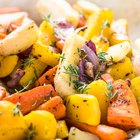
How to Cook Vegetables in a Roaster ...

The Effects of Inhaling Air Dusters
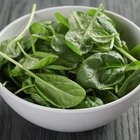
Does Fresh Spinach Cause Bloating?
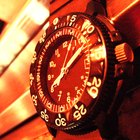
How Do I Set a Casio Module 4756 Watch?

How to Cook Beef Florentine
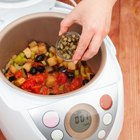
Slow Cookers & Nutrition

The Positive Effects of Using a ...
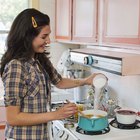
How to Make Liquid Sugar Concentrate

Cooking Poultry With a Convection Vs. ...
4 Weight Watchers Soup Recipes
How to Convert Oven Time to Crock Pot ...
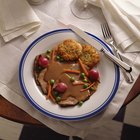
Is the Slow Cooker a Healthy Way to ...
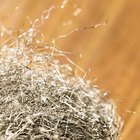
How to Clean Burnt-on Food From an ...
Weight Watchers Taco Soup Recipe

How to Conserve Natural Gases

How to Reheat Chinese Takeaway

How to Steam Dumplings
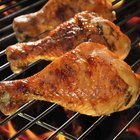
Healthy Way to Cook Chicken Thighs
References
- On Food and Cooking: The Science and Lore of the Kitchen; Harold McGee
- Epicurious: Cooking With Convection Ovens
- Hip Pressure Cooking: How the Pressure Cooker Works
Writer Bio
Fred Decker is a trained chef and prolific freelance writer. In previous careers, he sold insurance and mutual funds, and was a longtime retailer. He was educated at Memorial University of Newfoundland and the Northern Alberta Institute of Technology. His articles have appeared on numerous home and garden sites including GoneOutdoors, TheNest and eHow.